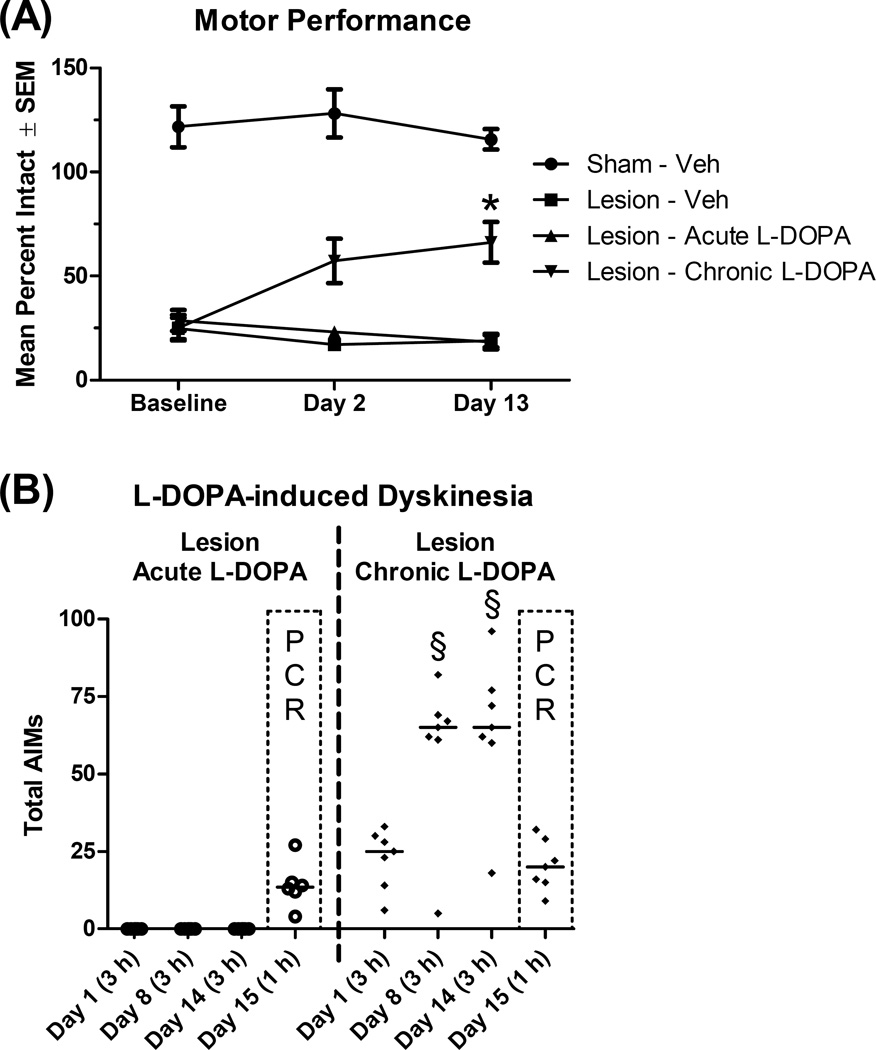Figure 3.
Effect of dopamine lesion and treatment with L-DOPA on motor performance and dyskinesia (n = 6–7 per group). Rats received a unilateral lesion with 6-hydroxydopamine (or sham) and were allowed to recover for 3 weeks. Rats were subsequently treated daily for 14 d with vehicle (Veh), except rats in the “Chronic” condition, which received daily L-DOPA (6 mg/kg). (A) Motor performance was assessed with the forepaw adjusting steps test at baseline (prior to treatment) and on days 2 and 13 of daily L-DOPA or Veh. (B) Dyskinesia was assessed with the abnormal involuntary movements (AIMs) scale for 3 h on day 1, 8 and 14 of daily L-DOPA or Veh. On day 15, rats in the “Acute” and “Chronic” groups received L-DOPA (6 mg/kg), while others received Veh. Rats were assessed for AIMs for 60 min and tissue was harvested at 65 min. Data points show total AIMs scores for individual rats, while the horizontal line indicates the median score. * p < .05 vs. baseline (Lesion - Chronic L-DOPA); § p < .05 vs. Day 1.

